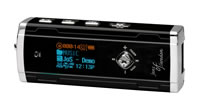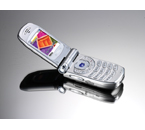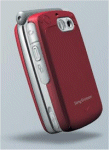It is no surprise to see a rise of articles questioning whether Apple can hold onto their storming lead in selling MP3 player and the music that goes on them. They currently have, by most estimates, around 50% of the MP3 player market to themselves and 70% of song sales. Many companies, technology, consumer electronics and content owning, are now waking up to how far they have let Apple go.
Some people are starting to raise the possible ghosts of Macintosh – where Apple foretold the rise of windowed interfaces for computers, only to be overtaken by the growth of Microsoft. Apple’s response then was to pursue niche markets, originally DeskTop Publishing (as it was known then) and latterly Desktop Video. It is arguable that this is the approach they have taken again with music
Last time around they made mistakes. Steve Jobs bringing John Sculley onboard to run the company, and Sculley subsequently persuading Apple to remove Jobs, being the biggest. Sculley then went on to make many, many mistakes of his own. Who knows how different it might have been if Jobs had stayed in charge.
Many have drawn comparisons between the recent attempt to ‘open up’ iPod to other music services and Microsoft’s similar, and ultimately doomed attempt to open up Macintosh.
We feel it is important to not forget Apple had a 909 percent increase (not a misprint) in iPod sales in the first quarter of 2004 over the same period the year before. Equally let us also not forget that this is the start of media becoming digital and Jobs hasn’t even started on either music devices for home use or and type of video device.
Reuters – Apple’s iPod Lead Creates New Challenges, Analysts Say
 The latest MP3 Flash-memory music player from Jens of Sweden has just been announced (so recently that they don’t have English details available). The stylish devices has all you would expect from a mini-MP3 player, currently up to 512Mb of storage, record function dictaphone and FM-radio. Amazingly this little beauty weighs the same as eight sheets of A4 paper.
The latest MP3 Flash-memory music player from Jens of Sweden has just been announced (so recently that they don’t have English details available). The stylish devices has all you would expect from a mini-MP3 player, currently up to 512Mb of storage, record function dictaphone and FM-radio. Amazingly this little beauty weighs the same as eight sheets of A4 paper. As well as taking advantage of the enhanced resolution and colours that are constantly evolving with each iteration of handsets released, the less than catching named “Vodafone live!TM with 3G” will speed the delivery of content and widely-enable the streaming of audio and video content. They, like rival operator 3, are hoping that high bandwidth video calling and messaging will grab the imagination of their users, bringing them far higher revenues that standard SMS text messaging currently do.
As well as taking advantage of the enhanced resolution and colours that are constantly evolving with each iteration of handsets released, the less than catching named “Vodafone live!TM with 3G” will speed the delivery of content and widely-enable the streaming of audio and video content. They, like rival operator 3, are hoping that high bandwidth video calling and messaging will grab the imagination of their users, bringing them far higher revenues that standard SMS text messaging currently do. The number of Vodafone-approved handsets available will increase. Following the Z105 will be the Sony Ericsson Z1010, a clamshell-design with two displays and two cameras that was announced over a year ago. Availability of Nokia handsets was not mentioned.
The number of Vodafone-approved handsets available will increase. Following the Z105 will be the Sony Ericsson Z1010, a clamshell-design with two displays and two cameras that was announced over a year ago. Availability of Nokia handsets was not mentioned.